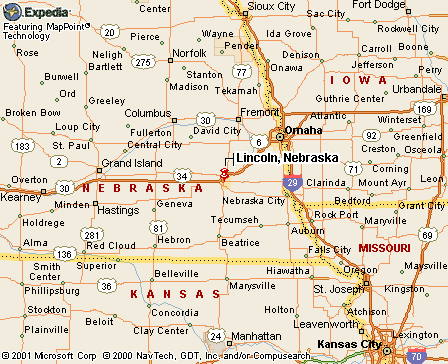|
|
Canku Ota |
|
|
(Many Paths) |
||
|
An Online Newsletter Celebrating Native America |
||
|
November 17, 2001 - Issue 49 |
||
|
|
||
|
U. Nebraska-Lincoln Program Aims to Put American Indian Teachers in Schools |
||
|
by Patti Vannoy Daily Nebraskan U. Nebraska |
||
 (U-WIRE) LINCOLN,
Neb. -- The countdown to graduation is nearly over for Donald Blackbird Jr., but not too much will change when
he receives his degree. (U-WIRE) LINCOLN,
Neb. -- The countdown to graduation is nearly over for Donald Blackbird Jr., but not too much will change when
he receives his degree.Blackbird is graduating in December from the Native American Career Ladder Project, a collaboration between University of Nebraska-Lincoln Teachers College, Nebraska Indian Community College, Little Priest Tribal College and reservation school districts. The program is supported by a five-year federal grant. The program's objective is to certify up to 30 American Indian teachers to work in Nebraska's reservation schools. Having American Indian teachers in reservation schools, where kids sometimes drop out before they reach high school, is important because education is often less valued in these areas. "The children need to see positive role models making a difference," said Blackbird, an Omaha tribe member. "Seeing elders going to college makes them see that education is important." College students in the program attend classes in Macy and Norfolk, Neb., taught by UNL professors who travel to teach at the remote locations. Blackbird describes this arrangement as more comfortable and convenient for students such as himself who can't commute to Lincoln, Neb. The students work as paraprofessionals in the reservation schools while they are taking university classes and earning practicum credit. Their student teaching takes place in the same schools. Blackbird currently is finishing his student teaching at St. Augustine's, a mission school in Winnebago, Neb. He plans to remain there to work after graduation. The program's director said Blackbird and the 20 other program participants are in a unique position -- simultaneously students and teachers. "They all have to show a commitment to really want to teach," said Nancy Engen-Wedin, director of the Native American Career Ladder Project. This double duty is even more strenuous because the program spans two full years with no breaks. Students takes classes continuously through fall, spring and summer semesters. "It was a hard two years," said Kellie Mendoza, who was one of the first three to graduate from the program in August. "Everyone complains about wanting a vacation, but what you give up now, it will pay off." Those who persevere for two years receive more than just their degrees and valuable teaching experience. Graduates of the program not only earn certification to teach in elementary and middle levels but also receive training in the tribal language of the school they will work in. Blackbird will be able to teach English as a second language in the Omaha tribal language. The program also addresses the unique cultural aspects of the reservation schools. "The thing that's exciting about it is that the faculty all try to develop culturally relevant curriculum," Engen-Wedin said. Specialized course subjects include ecosystems of northeast Nebraska and social studies methods. According to Engen-Wedin, these focused classes aim to help students reclaim their own local cultures and understand how it fits into the world at large. The Native American Career Ladder Project is an opportunity truly valued by its students and the community it serves. Of the university's 107 American Indian students, 21 are currently participants in the program. "It's a really good program. I feel it caters to nontraditional students in ways we appreciate," Mendoza said. The program is applauded in wider circles, as well. Blackbird, fellow student Renee New Holy and former program director Beth Franklin will be speaking at The Cornhusker Hotel, 333 S. 13th St. on Wednesday. The trio's presentation will be part of the People of Color in Predominantly White Institutions conference, sponsored by the university. (C) 2001 Daily Nebraskan via U-WIRE |
|
|
|
|
||
|
|
||
| Canku Ota is a free Newsletter celebrating Native America, its traditions and accomplishments . We do not provide subscriber or visitor names to anyone. Some articles presented in Canku Ota may contain copyright material. We have received appropriate permissions for republishing any articles. Material appearing here is distributed without profit or monetary gain to those who have expressed an interest. This is in accordance with Title 17 U.S.C. section 107. | ||
|
Canku Ota is a copyright © 2000, 2001 of Vicki Lockard and Paul Barry. |
||
|
|
|
|
|
The "Canku Ota - A Newsletter Celebrating Native America" web site and its design is the |
||
|
Copyright © 1999, 2000, 2001 of Paul C. Barry. |
||
|
All Rights Reserved. |
||

